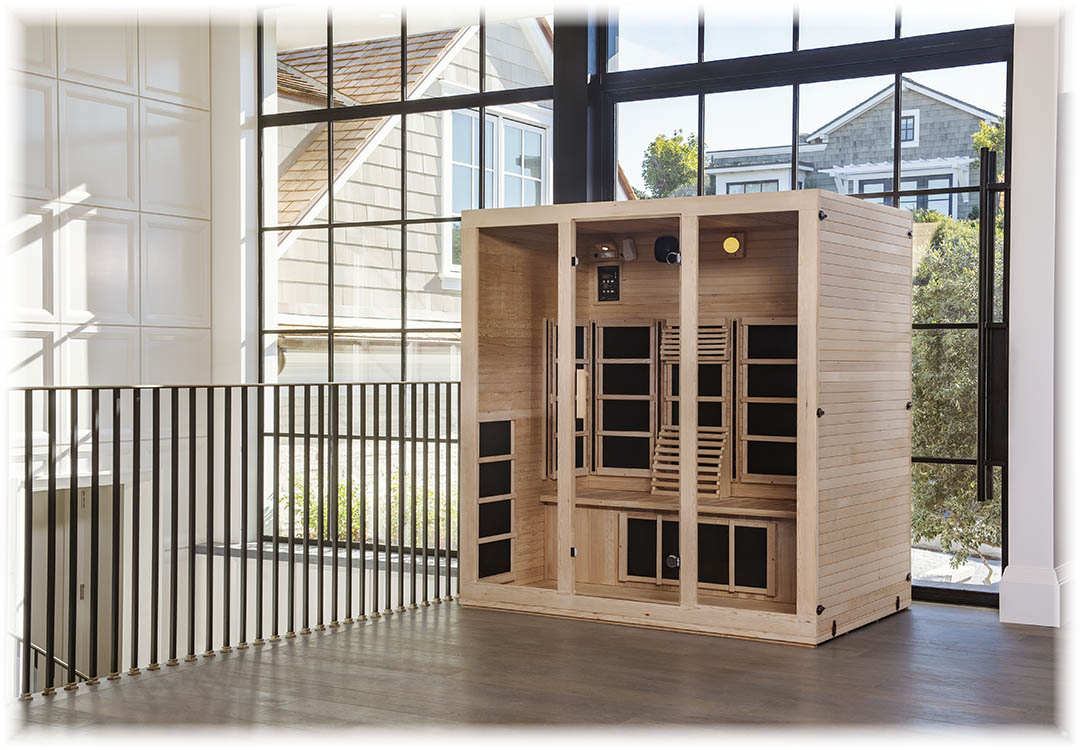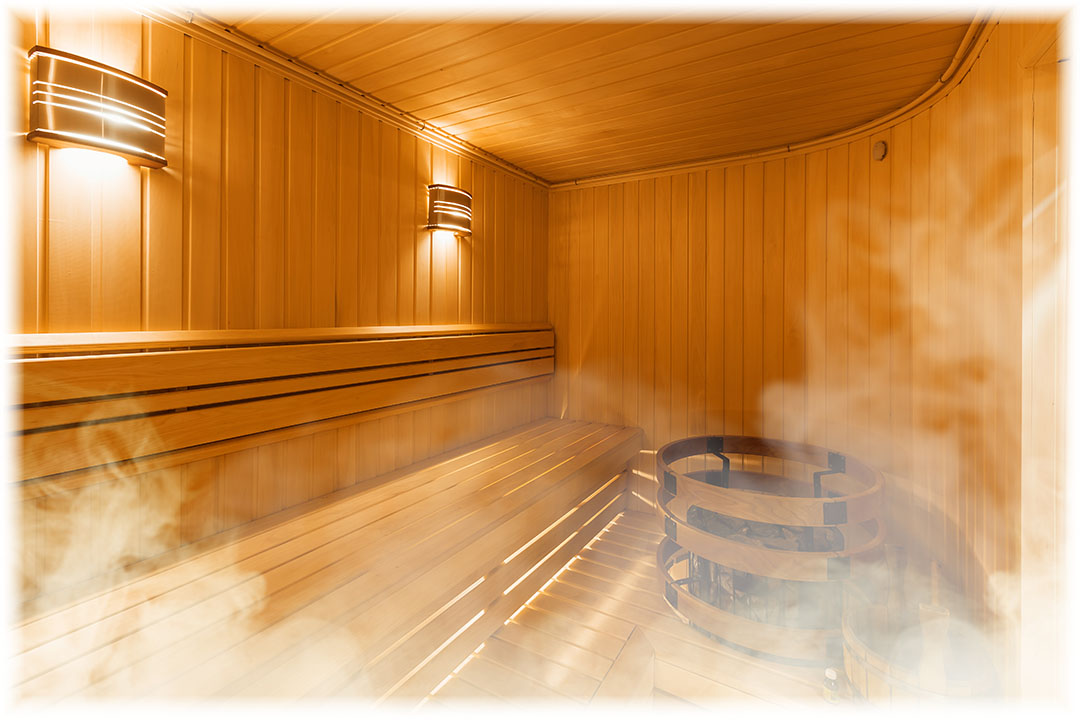Types of Saunas
According to some historians, the first saunas date back to 2,000 B.C. in Northern Europe. Initially used for survival, saunas now serve many other purposes such as healing, hygiene, meditation and are often the center of social gatherings.
Today, there are three primary types of saunas. The traditional forms are Finnish (dry) and steam saunas (wet), with infrared (dry) being the newest addition.
Infrared Saunas

Infrared saunas are a contemporary variation of traditional saunas, using far infrared waves to warm its users from the inside out. Infrared waves are on the same spectrum as radio waves and visible light, but have a longer wavelength which allows for deep body penetration.
Traditional Finnish Saunas

Finnish saunas (or dry saunas) are the most common type of sauna and are often found in gyms and spas. These saunas are heated with wood, gas or an electric stove that usually incorporates heated rocks. Regardless of how heat is provided, all Finnish saunas focus on heating the air in the room, which then heats its users; this is referred to as convection heating.
Finnish saunas reach temperatures of over 180°F and maintain extremely low humidity levels of 10-20%, hence dry saunas. Most people find Finnish sauna sessions to be stifling due to the extreme temperatures. This in turn leads to short therapy sessions that do not allow users to achieve the best results.
Traditional Steam Room Saunas

Unlike Finnish saunas, steam saunas/rooms maintain lower temperatures (100°F-115°F) and high levels of humidity, reaching upwards of 100%. The steam in this type of sauna is super heated, transferring its heat onto individuals sitting within the cabin. Like Finnish saunas, this is also convection heating.
Technically, steam saunas function at lower temperatures than Finnish saunas. The high humidity, however, makes it feel significantly hotter, often prompting users to comment that they have difficulty breathing during a session.
Traditional Saunas vs Infrared Saunas
Although they all have the word “sauna” in their names, traditional and infrared saunas have major differences. Both forms may operate on the basic principles of raising body temperature and causing perspiration, but their methods of achieving this differ.
Unlike steam and Finnish, infrared saunas don’t use a stove or steam to increase the air temperature within the cabin; instead they use radiant heat. Infrared waves are directional, meaning that you need to be surrounded by infrared heaters to experience the gentle, yet powerful heat of infrared therapy.
This is one of the major differences between their traditional counterparts, who rely on heating the air within the cabin first, which then transfers its heat onto the user; otherwise known as convectional heat. Traditional saunas reach air temperatures of +180°F, creating a stifling environment that the average person can only endure for 15-20 minutes.
Infrared saunas utilize infrared waves to transfer heat directly to your body without the need to drastically increase the rooms' temperature or humidity. As a result, they're easily tolerable and create an environment of relaxation where you can enjoy session lengths of up to 60 minutes.
This form of radiant heat causes only a slight rise in air temperature, ranging from 100°F-125°F, depending on environmental factors. Although the air temperature is lower, what you feel is closer to 140°F.
Do Infrared Saunas Need To Pre-Heat?
With their unique heating method, infrared saunas do not require pre-heating. Once you turn your sauna on, you can immediately begin enjoying your session. However, if you prefer to step into a heated environment, you may pre-heat your infrared sauna for 5 minutes.
Which Sauna Is The Right Choice?
Many factors should be taken into consideration before purchasing a sauna, including health benefit needs, budget and placement in the home. If an affordably priced, high-quality sauna with easy installation and maintenance sounds ideal, then choosing an infrared sauna is the right choice.
It is evident that infrared saunas offer the most hassle-free customer experience compared to other options. Steam saunas require not only a substantial amount of floor space but also need additional plumbing work, burning a major hole in your wallet.
If you have any questions, please call our JNH Sauna Specialists:
(800) 528-3110
Monday-Friday: 5am - 6pm PST
Saturday & Sundays: Closed
(Closed on Major Holidays)
Or use our convenient online chat support.

